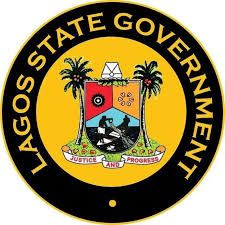
In a major policy shift aimed at addressing Lagos State’s growing housing demands, the state government has officially reduced the minimum land size required for estate development from 10,000 square metres to 5,000 square metres.
The announcement was made by the Commissioner for Physical Planning and Urban Development, Oluyinka Olumide, during the inaugural edition of the Ministry’s Quarterly Media Parley, held at the Ministry’s Conference Room in Alausa.
Olumide explained that the revision aligns with the urban realities of Lagos, where rapid population growth and increasing urbanisation have placed immense pressure on land availability and the need for estate development.
“This new policy reflects the current dynamics in Lagos. With limited land and rising demand for housing, we must adapt and make estate development more accessible,” he said.
The Commissioner also revealed that following the publication of a list of 176 non-compliant estates in August, some promoters have begun engaging with the government in an effort to regularise their developments.
“Several of the affected developers have approached us to resolve their compliance issues,” he noted. “However, enforcement action will soon begin on those who have not made any effort to come forward.”
Olumide further disclosed that enforcement operations would soon extend to additional areas, including Ikorodu and Ikeja, where similar unregulated estate conversions have been observed.
He also mentioned the Ministry’s plans to establish a framework for communities that have been informally converted into estates without appropriate approvals, indicating that such cases would now fall under formal regulatory oversight.
Planning, Permits, and Urban Transformation
Reaffirming the importance of structured urban growth, the Commissioner emphasised that the Operative Development Plans of Lagos State are critical guides for public and private projects alike.
Projects such as the Blue and Red Line Rail systems, key flyovers, and other infrastructure initiatives are all built on the foundation of these development blueprints, he said.
“We’ve completed key plans such as the Alimosho Model City Plan, Kosofe Model City Plan, Lagos Island Model City Plan, and the Badagry Master Plan,” Olumide said, urging stakeholders to adhere to these structured guidelines.
He also highlighted that the Lagos State Physical Planning Permit Agency (LASPPPA) is now operating more efficiently than ever, having exceeded expectations in processing and approving planning permits.
“With reforms in staffing, district expansion, and process awareness, applicants can now receive planning permits within just 10 days of payment,” he said, noting that automation of the entire process is on the way.
As part of wider urban regeneration efforts, the Commissioner disclosed that over 3,000 hectares of land across Lagos have been earmarked for transformation. These include underutilised areas along power line corridors, gas lines, and drainage setbacks many of which are currently being used informally.
He said the government plans to reclaim these spaces and redevelop them into functional areas such as structured parking zones and public infrastructure to ease pressure in high-density communities.
“We’re reimagining how we use neglected urban spaces. These locations, once left unplanned, will now be repurposed to support city life reducing congestion and creating more organised developments,” he concluded.



